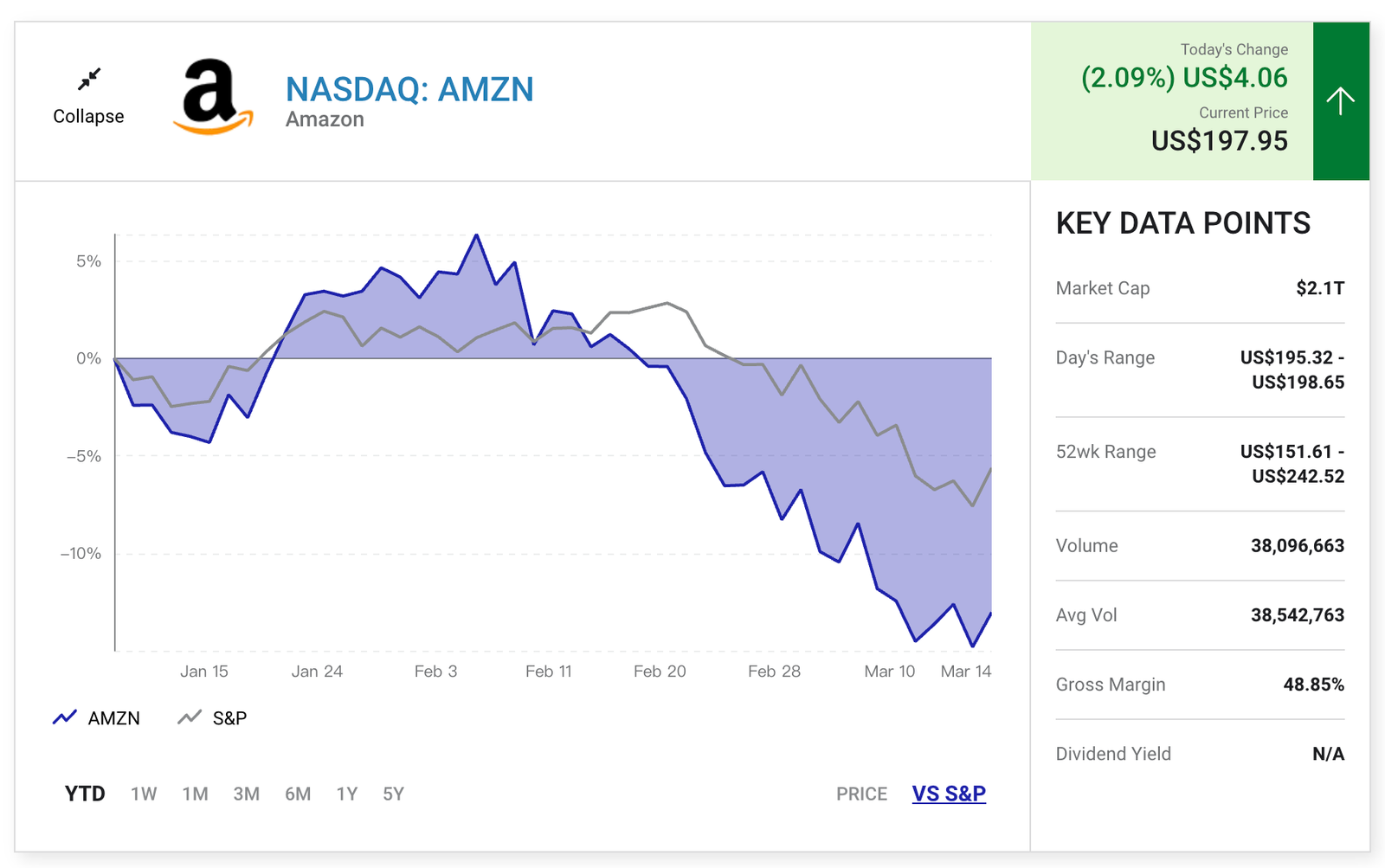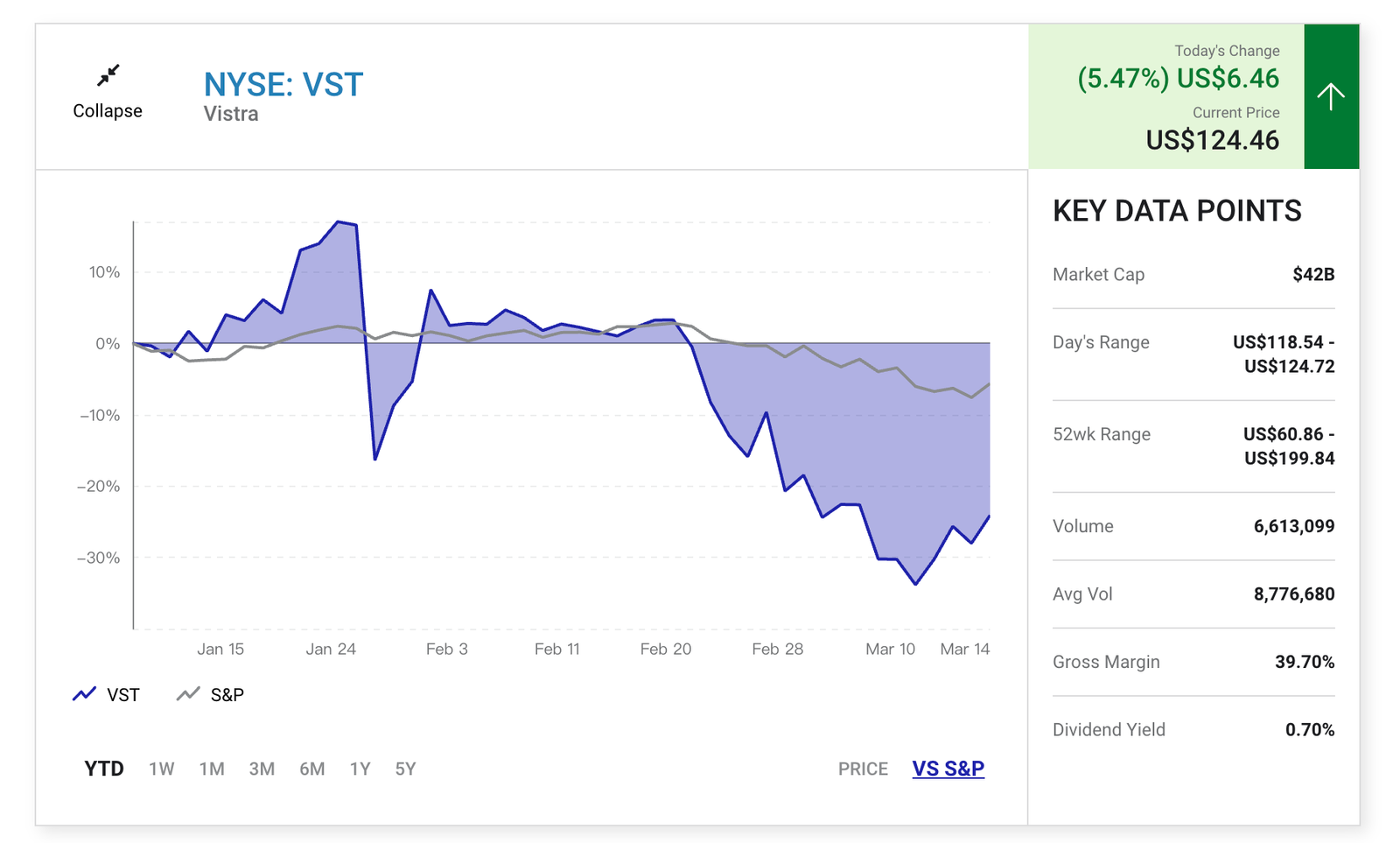Trevor Jennewine
David Tepper, founder and president of Appaloosa Management, ranks among the 15 most successful hedge fund managers in history based on net gains since inception, according to LCH Investments.
In the fourth quarter, Tepper sold 600,000 shares of Amazon (AMZN), reducing his stake by 19%. He also acquired 1.4 million shares of Vistra (VST), more than doubling his investment in the power-generation company. Vistra stands to gain if artificial intelligence drives up electricity demand for data centers.
While both Amazon and Vistra have seen their shares decline about 10% since the fourth quarter, Wall Street anticipates a strong rebound for both stocks in the months ahead.
- Amazon has a median target price of $270 per share, which implies 36% upside from its current share price of $198.
- Vistra’s median target price is $192 per share, implying 55% upside from its current share price of $124.
Here’s what investors should know.

- Amazon
Amazon has three important growth engines: e-commerce, digital advertising, and public cloud services. And it’s using artificial intelligence (AI) to improve revenue and operating efficiency across all three segments. In particular, Amazon is an underappreciated AI leader in retail and cloud computing, according to Morgan Stanley.
For example, Amazon runs the largest online marketplace in the world outside of China, and it supports its merchants with a vast logistics network. To reinforce its strong market presence, the company uses machine learning models to recommend products, optimize inventory allocation, and plan delivery routes. Those efforts have already led to an uptick in margins.
Amazon Web Services (AWS) is the leading public cloud in terms of sales and the most popular cloud among developers. That alone positions the company as a winner in the AI boom. But the company is also innovating quickly. CEO Andy Jassy recently said, “In the last 18 months, AWS has released nearly twice as many machine learning and generative AI features as the other leading cloud providers combined.”
Amazon looked strong in the fourth quarter, despite missing sales estimates in the adtech segment. Revenue increased 10% to $187 billion, operating margin expanded more than 3 percentage points, and generally accepted accounting principles (GAAP) earnings rose 86% to $1.00 per diluted share. Management also said cloud revenue could have grown faster had AWS not been capacity-constrained.
Wall Street expects Amazon’s earnings to grow at 21% annually over the next three years. That makes the current valuation of 36 times earnings look quite reasonable. So, why did Tepper sell Amazon in the fourth quarter? I suspect he was rebalancing his portfolio, but I doubt he has lost conviction in the stock. Amazon was still his second-largest holding when the quarter ended.

- Vistra
Vistra is an integrated power-generation and retail electricity company. Its portfolio of coal, natural gas, nuclear, and renewable energy facilities collectively offers 41,000 megawatts of generation capacity, making Vistra the largest competitive power producer in the United States. It also owns the second-largest nuclear fleet in the country.
Vistra primarily operates in the ERCOT (Texas) and PJM (13 eastern states) markets, which positions it to benefit from increased manufacturing activity, electrification of the Permian Basin, and increased electricity consumption from AI data centers. Demand through 2030 in those regions is forecast to grow nearly three times faster than it did in the past decade.
Vistra reported solid fourth-quarter financial results. Adjusted earnings before interest, taxes, depreciation, and amortization (EBITDA), which excludes the unrealized gains and losses on contracts used to hedge against energy price volatility, rose 107% to $1.9 billion. But the stock fell sharply following the report because investors were disappointed that Vistra has yet to sign deals to supply power to big tech data centers.
On that point, investors have reason to question how much AI data centers will boost electricity demand. In recent technical papers, Chinese start-up DeepSeek claimed to have trained AI models comparable to those from U.S. companies like OpenAI, but DeepSeek did so with fewer and less powerful Nvidia graphics processing units (GPUs).
In short, some of the anticipated electricity demand may not materialize, and I doubt that possibility has been fully priced into the stock. Vistra currently trades at 17.5 times free cash flow, a substantial premium to the two-year average of 11.8 times free cash flow. That makes the stock somewhat risky.
Admittedly, Vistra shares could soar if the company signs data center power deals with big tech companies. But right now, I would rather own an index fund that tracks the utilities sector as opposed to this specific stock because the latter strategy involves more concentration risk.
The Services and the Content are provided to you solely for your general informational purposes, and should not be considered as legal, tax, accounting, financial or investment advice.You are solely responsible for determining whether any investment is suitable for you, considering your investment objectives, risk tolerance and personal financial situation. It is also your responsibility to evaluate the merits and risks of using the information provided on this site before making any decisions.

